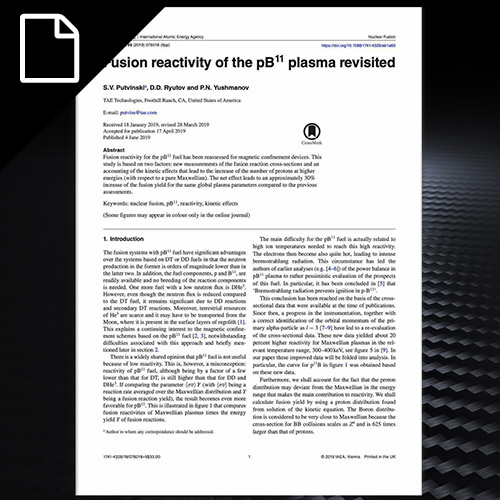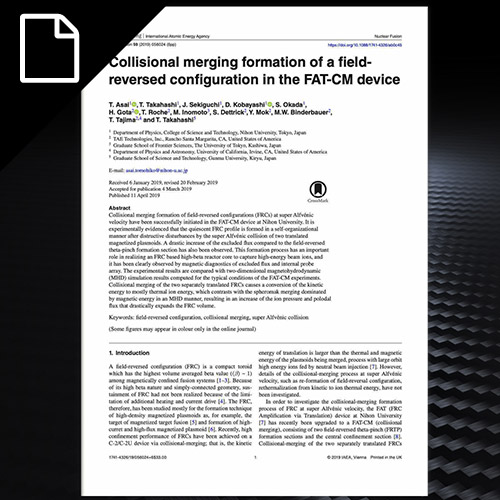Jul 2024 | Research Library, Papers, Experiment, Formation, Fusion Energy, Fusion Research, Fusion Science, Fusion Technology, Plasma Research
January 2024 | T. Asai | Physics of Plasmas | Paper
Rapid magnetic reconnection was experimentally observed to occur within a microsecond timescale, leading to the field-reversed configuration (FRC) comprising a single closed magnetic field structure.
Nov 2023 | Research Library, Posters, Experiment, Formation, Fueling, Fusion Energy, Fusion Research, Fusion Science, Fusion Technology, Plasma Research
November 2023 | I. Allfrey | APS DPP 2023 | Poster
Newly developed magnetized coaxial plasma guns (MCPG) where counter-helicity spheromak merging
generates a high-flux FRC have been investigated for use in FRC fueling and re-fluxing
Oct 2022 | Research Library, Posters, Experiment, Formation, Fueling, Fusion Energy, Fusion Research, Fusion Science, Fusion Technology, Plasma Research
October 2022 | T. Matsumoto | APS-DPP 2022 | Poster
MCPGs, also known as CTIs, can control the total trapped flux of the ejected spheromak by adjusting the initial stuffing field between the electrodes
Oct 2021 | Research Library, Papers, Experiment, Formation, Fusion Energy, Fusion Research, Fusion Science, Fusion Technology, Plasma Research
October 2021 | T. Asai | Nuclear Fusion | Paper
Self-organized FRC-like formation was observed after the super-sonic/Alfvenic collisional merging of two FRCs in the FAT-CM device at Nihon University

Feb 2021 | Research Library, Posters, Diagnostics, Experiment, Formation, Fusion Energy, Fusion Research, Fusion Science, Fusion Technology, Plasma Research
December 2020 | N. Bolte | HTPD 2020 | Poster
In TAE Technologies’ current experimental device, C-2W (also called “Norman”)1, record breaking, advanced beam-driven FRC…

Jun 2019 | Research Library, Papers, Experiment, Formation, Fusion Energy, Fusion Research, Fusion Science, Fusion Technology, Plasma Research
June 2019 | T. Asai | Nuclear Fusion | Paper
Collisional merging formation of field-reversed configurations (FRCs) at super Alfvénic velocity have been successfully initiated in the FAT-CM device at Nihon University. It is experimentally evidenced that the quiescent FRC profile is formed in a self-organizational manner after distructive disturbances by the super Alfvénic collision of two translated magnetized plasmoids.

